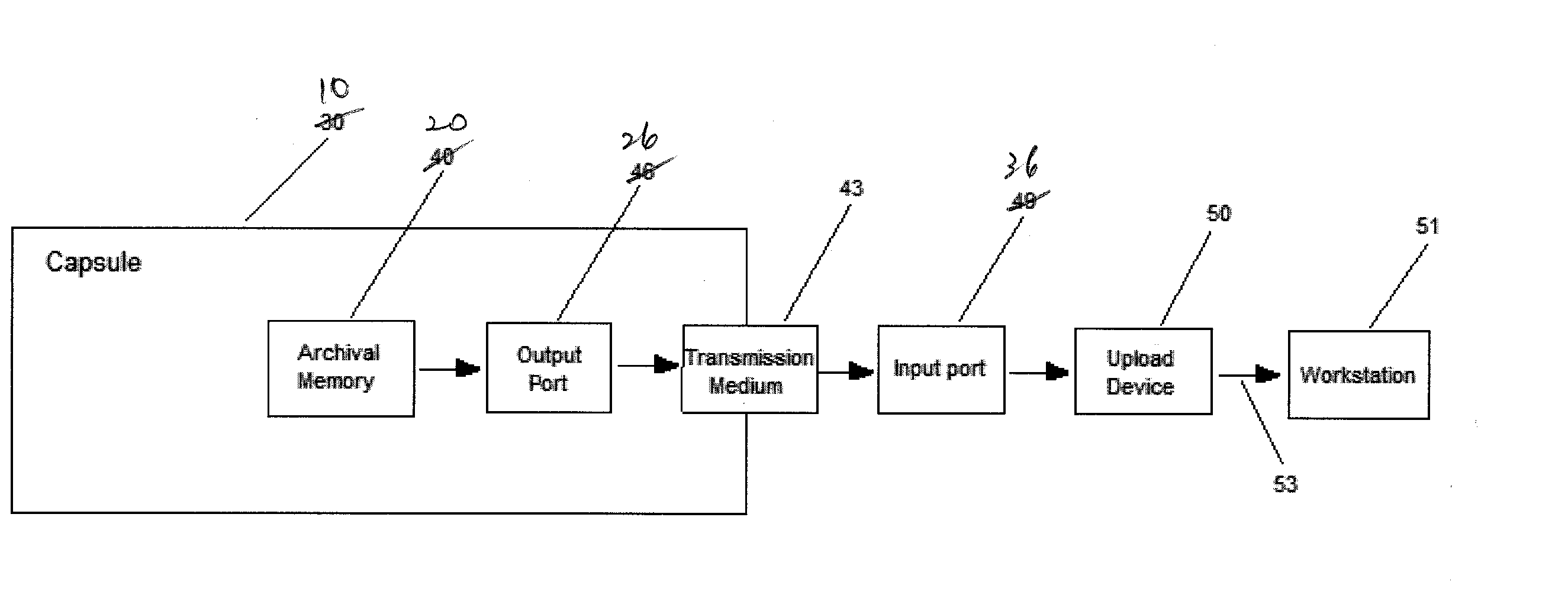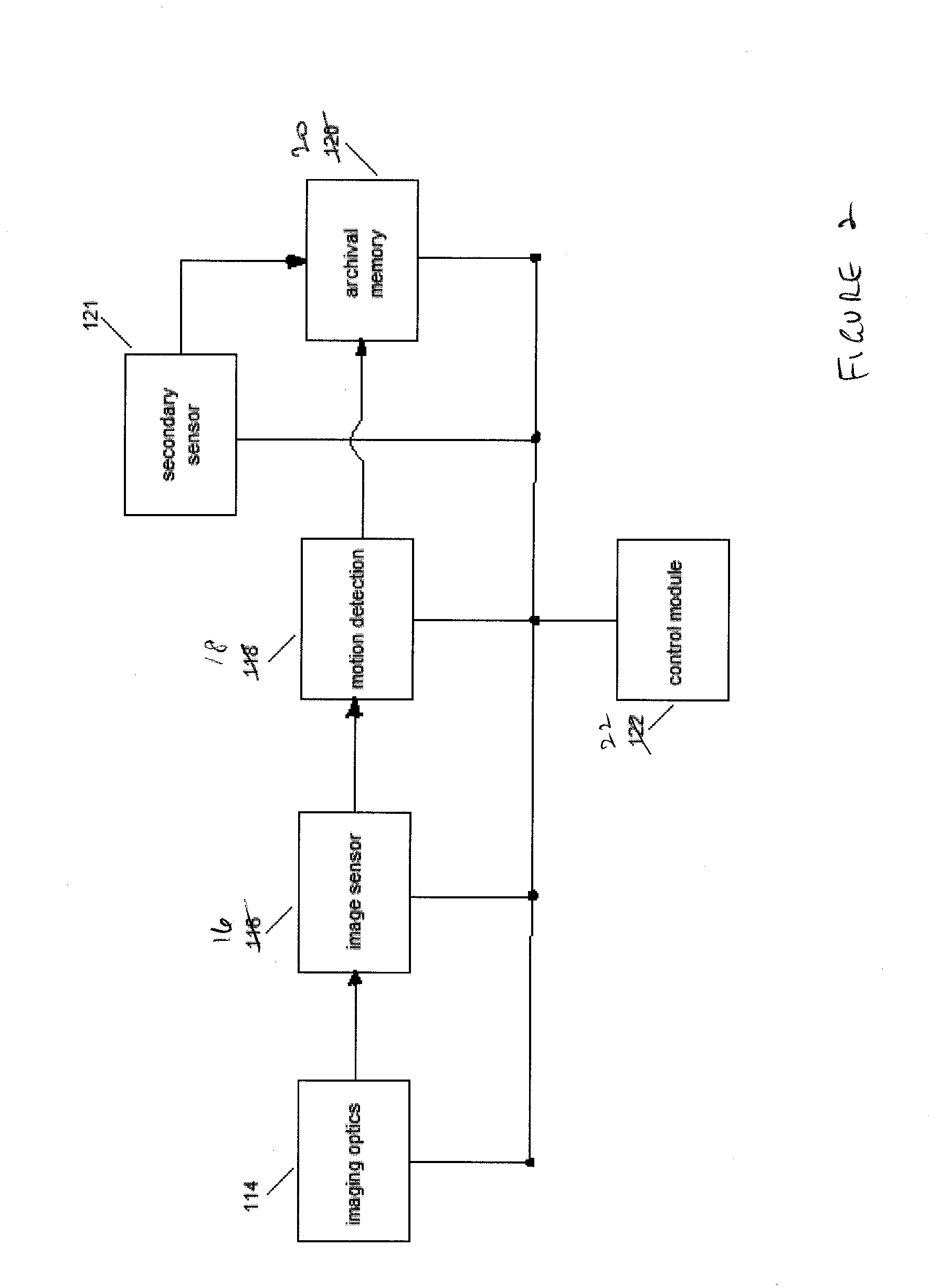In vivo autonomous camera with on-board data storage or digital wireless transmission in regulatory approved band
a technology of on-board data storage and digital wireless transmission, applied in the field of diagnostic imaging, can solve the problems of inability to reach the endoscope, cost restriction of application, and risks for patients
- Summary
- Abstract
- Description
- Claims
- Application Information
AI Technical Summary
Benefits of technology
Problems solved by technology
Method used
Image
Examples
Embodiment Construction
[0044] Today, semiconductor memories are low-cost, low-power, easily available from multiple sources, and compatible with application specific integrated circuit (ASIC) and sensor electronics (i.e., the data sources), and a personal computer (i.e., the data destination) without format conversion devices. One embodiment of the present invention allows images to be stored in an “on-board storage” using merchant semiconductor memories (i.e., “off-the-shelf” memories, or memories manufactured using industry standard memory processes, or readily available memory processes). To enable taking a large number of diagnostic images in such areas as the colon, a method of the present invention controls the number of images stored in the semiconductor memories by detecting camera movements. One embodiment of the present invention takes advantage of the fact that, for much of the time, either the capsule does not move in the GI tract, or the portion of the GI tract within the camera's view is not...
PUM
 Login to View More
Login to View More Abstract
Description
Claims
Application Information
 Login to View More
Login to View More - R&D
- Intellectual Property
- Life Sciences
- Materials
- Tech Scout
- Unparalleled Data Quality
- Higher Quality Content
- 60% Fewer Hallucinations
Browse by: Latest US Patents, China's latest patents, Technical Efficacy Thesaurus, Application Domain, Technology Topic, Popular Technical Reports.
© 2025 PatSnap. All rights reserved.Legal|Privacy policy|Modern Slavery Act Transparency Statement|Sitemap|About US| Contact US: help@patsnap.com



